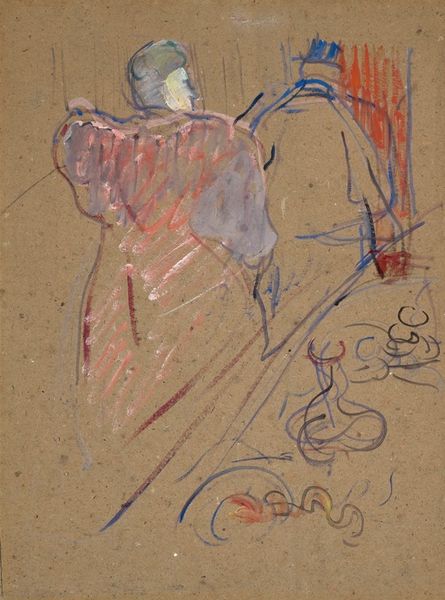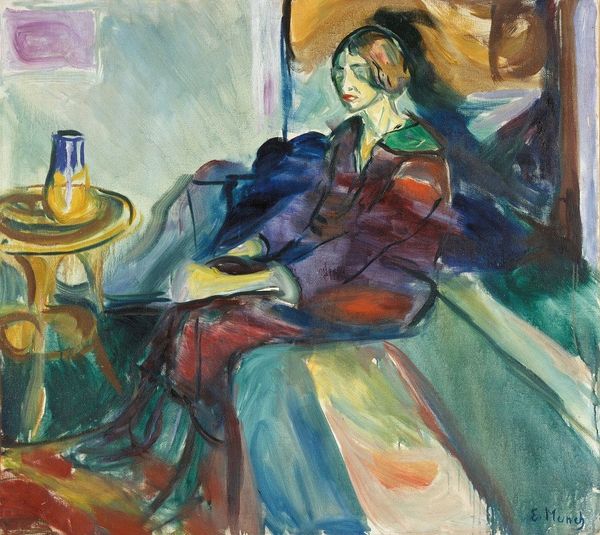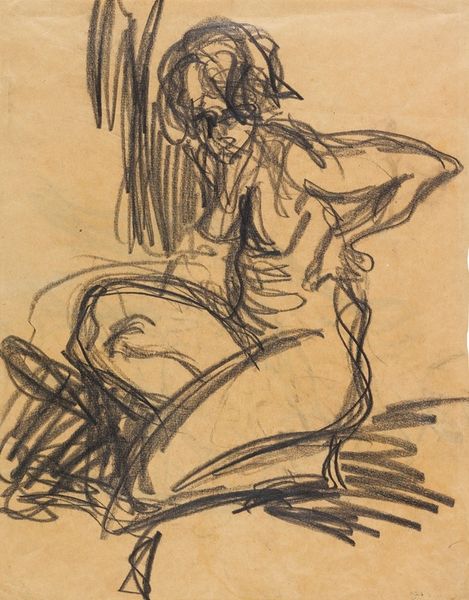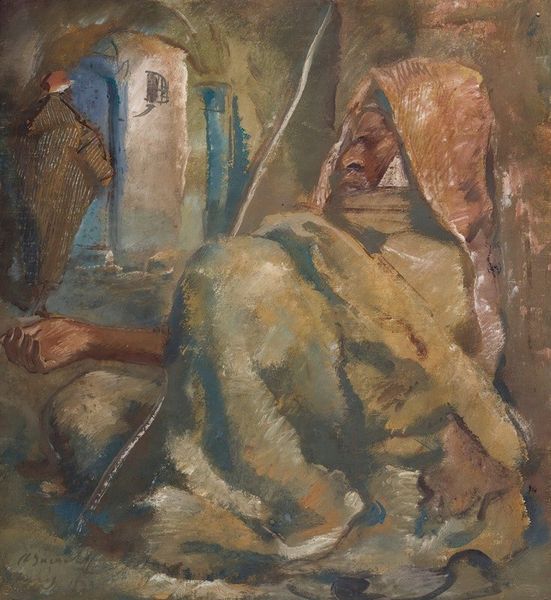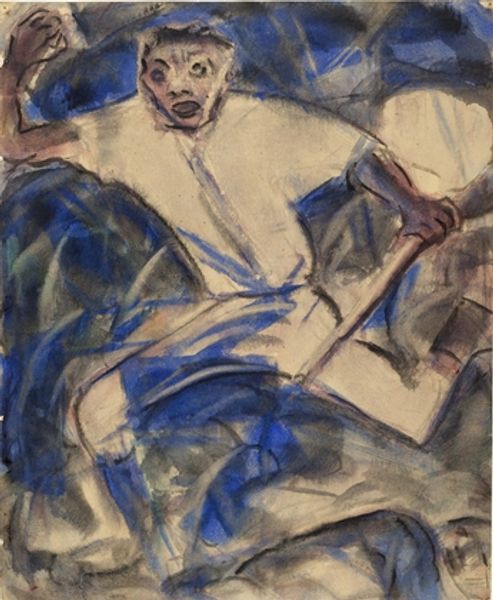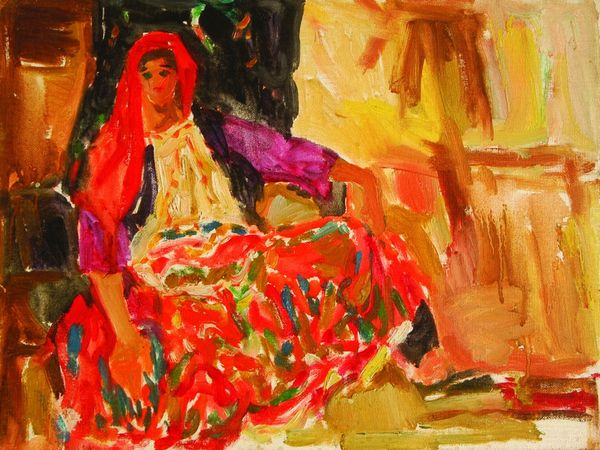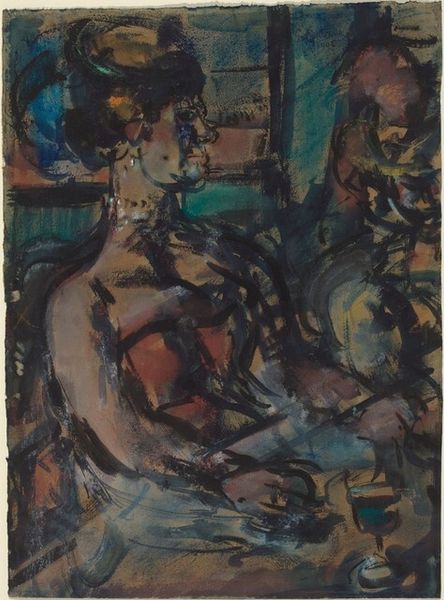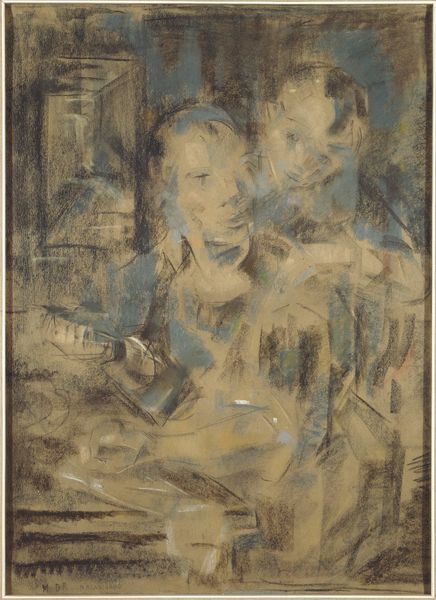
drawing, pastel
#
portrait
#
drawing
#
possibly oil pastel
#
oil painting
#
orientalism
#
portrait drawing
#
watercolour illustration
#
pastel
Copyright: Zinaida Serebriakova,Fair Use
Curator: Zinaida Serebriakova’s "Marrakesh," created in 1928, presents an intimate scene of daily life in Morocco, rendered possibly in pastel on paper. What’s your first impression of the piece? Editor: I am immediately struck by the work's subtle interplay of light and shadow and its muted color palette. The composition is lovely – the way the figures are arranged feels balanced, almost sculptural. There's a quietness that emanates from it, a serene stillness. Curator: That tranquility may stem from the social context surrounding its creation. Serebriakova travelled to Morocco after experiencing profound loss and displacement following the Russian Revolution. These travels were commissioned, a way for her to earn a living depicting colonial subjects and settings. The Orient, viewed by Europeans, was seen as offering both aesthetic pleasure and anthropological interest. Editor: Looking at the figures more closely, the textural quality achieved through the pastels is particularly striking, almost a haze. Observe how the artist captured the veiled face of the seated woman; it speaks to a command of representing form using limited chromatic resources. The dark blue covering creates depth and dimension through simple strokes. Curator: But consider also the power dynamic inherent in these representations. While seemingly observational, works like this helped to consolidate the idea of the ‘exotic other’ within the European imagination, serving particular colonial interests at the time, especially French interests in North Africa. How does her gender factor into this representation? Editor: That’s a fair point, and from my perspective, thinking about these cultural dynamics should prompt further study of how this representation challenges typical visual tropes of the time. Looking past such challenges though, and in its own right, the drawing suggests an intersection between aesthetic sensibility and social observation; there is, within the artist’s technique, evidence of skill and cultural encounter. Curator: Exactly! Analyzing the power structures at play complicates but enriches our appreciation, I think. These details push us to engage more actively and thoughtfully with the art. Editor: Precisely. Examining her craft—light, shadow, and figure placement—reveals mastery while sparking a deeper appreciation when viewing work like this.
Comments
No comments
Be the first to comment and join the conversation on the ultimate creative platform.
